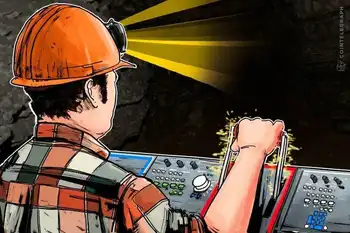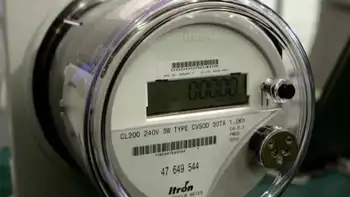China carbon capture costs worth paying: U.S.
By Reuters
High Voltage Maintenance Training Online
Our customized live online or in‑person group training can be delivered to your staff at your location.

- Live Online
- 12 hours Instructor-led
- Group Training Available
Carbon capture and storage (CCS) technology is seen by many as the only way forward in a country still heavily dependent on burning coal to meet its energy needs, but scientists say it will actually require more energy consumption, not less.
But this "energy penalty" — which includes the power required to drive the CCS facilities as well as transport and store the captured carbon — is nothing compared to the environmental costs of doing nothing to curb emissions, or "business as usual," Chu told Reuters.
"Is 10 or 20 percent too big an energy penalty? Not really, considering the real costs (of current practices) are actually considerably higher."
He said even if the energy penalty amounted to 30 percent, it was still modest compared to the costs of spewing out not just CO2, but also nitrous oxide and sulphur dioxide, which cause acid rain and damage air, water and forests.
"CCS is a way of cleaning up a lot of the pollutants that China has discovered, as we discovered years ago, is really bad stuff. Bad for your health. Bad for your lakes, your forests, everything."
The United States regulates nitrous oxide and sulphur dioxide emissions.
"So a 20 percent energy penalty is quite modest. And the technology will improve."
He said the United States was planning to work closely with China on developing carbon capture technology through the new U.S.-China Joint Clean Energy Research Center, which was established during Chu's visit to China.
China currently has a CCS "demonstration project" operating in suburban Beijing and run by state power giant Huaneng Group. Another is expected to go into operation later this year in Shanghai.
China's biggest coal firm, Shenhua, is also building what is described as the country's first commercial CCS project as part of its new coal liquefaction plant in Erdos, Inner Mongolia.
According to studies from the International Energy Agency, each carbon capture facility is likely to cost "a billion euros," and will need strong government backing to succeed.
"It is not possible commercially because it is too expensive," Nobuo Tanaka, secretary-general of the IEA, told Reuters during a visit to China last month.
With negotiations on a new global climate change compact set to conclude in the Danish capital of Copenhagen at the end of this year, many experts say more effort should be made to promote carbon capture technology as part of a new deal.
Up to now, concerns about safety and technological reliability have prevented CCS from receiving additional funding through the United Nations' clean development mechanism.
The CDM allows developed countries to invest in environmentally sound but economically marginal projects in the developing world in exchange for UN-issued carbon credits, which can then be sold on the market or used to fulfill mandatory emission cuts.
Robert Watson, chief scientific adviser to Britain's Department for the Environment, Food and Rural Affairs said CCS could not go ahead on a purely commercial basis, and therefore meets the UN's "additionality" principle, making it an ideal recipient for CDM backing.
"There is no reason to put carbon capture and storage on a power plant other than climate change," he said.
The technology remains expensive but the more it is rolled out, the cheaper and more efficient it is likely to become, said Chu.
"As we get better at it, the energy penalty will decrease," he said.











